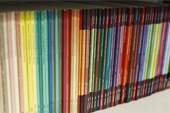
Corruption, grabbing and development
Cheltenham (UK), Edward Elgar, 2014
This site belongs to UNESCO’s International Institute for Educational Planning

Cheltenham (UK), Edward Elgar, 2014

Washington, D.C., Brookings Institution, 2012

Press
- IRIN

Berlin, Transparency International, 2010

London, Overseas Development Institute, 2009

Oslo, NORAD, 2009

Bergen, Chr. Michelsen Institute, 2009
Stay informed About Etico
Sign up to the ETICO bulletin to receive the latest updates
Submit your content
Help us grow our library by sharing your content on corruption in education.